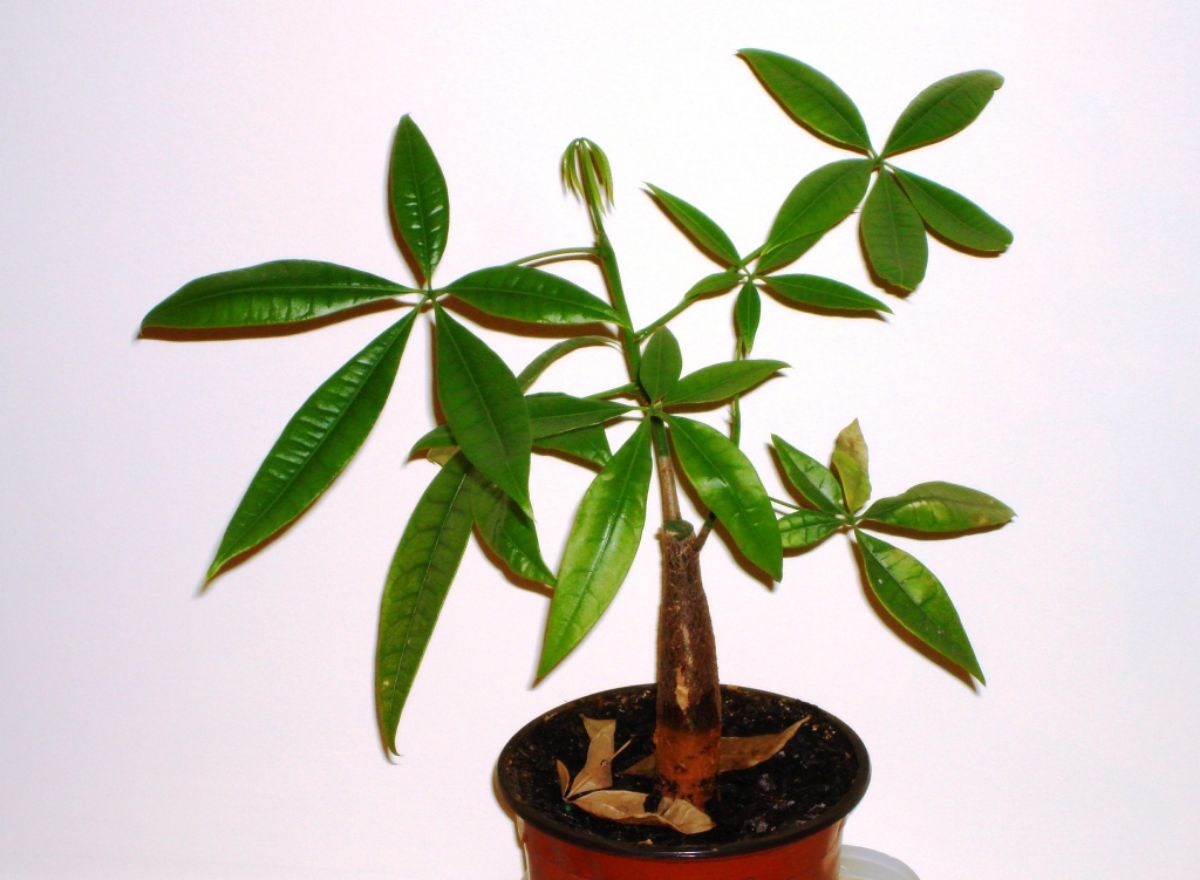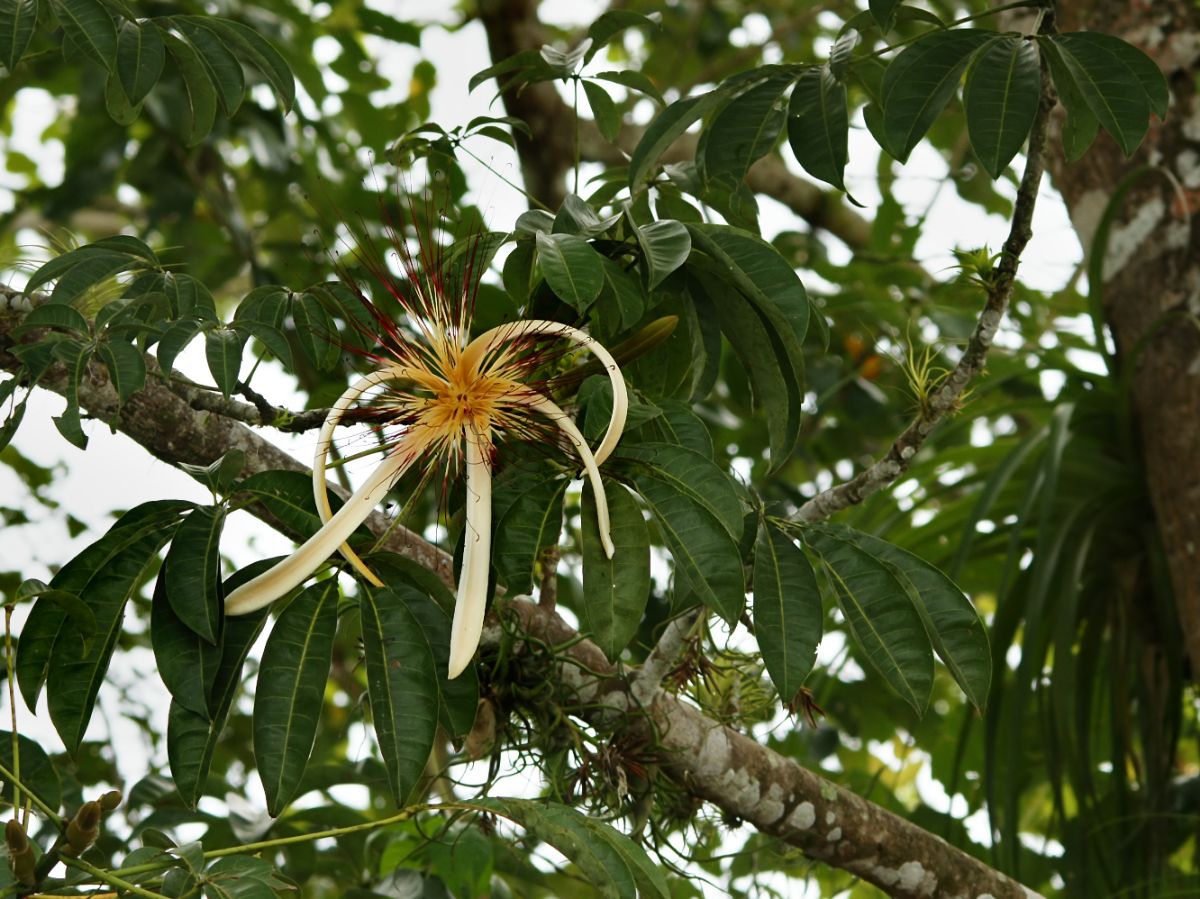
We are always told that the aquatic Pachira is resistant to pests and diseases. But the reality is that more than once you may have bought one and, after a few months, have to throw it away because it has died. Do you want to know the diseases of the aquatic pachira?
Now, We are going to talk to you about pests and diseases that usually negatively affect your plant. We will tell you what you are going to find and how to try to solve it to save his life. Shall we start?
Common pests in the aquatic Pachira

We are going to start with the pests because they are one of the diseases of the aquatic Pachira that most affect it. Among them, you should be especially careful with the following:
Cottony mealybug
The cottony mealybug is one of the pests that You can detect it with the naked eye and it affects many plants. In the case of the aquatic Pachira you can find it in its leaves. Especially on the reverse. You will see as if I had somewhat bulging white spots.
When it is more advanced, the mealybugs will also appear on the part of the trunk and even on the leaves on both sides.
What to do if it happens to you? If it turns out that your Pachira aquatica has a cottony mealybug, the first thing is not to panic. You have to get rid of it and the best thing is that Take a cotton ball and soak it in alcohol. With this, clean each of the leaves and the trunk of the plant. In this way you will be removing all the plague.
Now, that doesn't mean you're done with her. In fact, the best thing, after cleaning it, is that you use some chemical product against mealybugs in case there are remains.
As advice we also give you that you separate it a little from other plants for two reasons: in case the infestation of the pest has come from another plant; or in case it is still active in your aquatic Pachira and affects other plants you have.
Mites
Another of the pests that your aquatic Pachira can present is that of mites. These are small bugs that will roam your plant and may or may not be visible. But sooner or later you will see them because they tend to reduce the health of the plant and when you get closer to observe it, you may see them walking through it.
To do? Again, you have to wash the entire plant with a cotton swab with alcohol or potassium soap. Other options are neem oil or natural pyrethrins. Unlike with other pests, this does not completely eliminate the mites, instead you have to apply some insecticide targeted at the pest and repeat the cleaning process every 5 days to make sure it really is gone.
Aphids
With aphids you won't have a problem seeing them either, because they can be seen with the naked eye. You will see them as little bugs that go through the plant, the leaves, the trunk... They are not particularly harmful, but they should not be left there either. So the best treatment you can do is apply a insecticide focused on this pest.
Red spider
We got to the red spider. And the truth is that, of all the plague diseases that the aquatic Pachira can have, this is the most damaging it will have. Really when you will realize that it has a red spider it will be when you see that the leaves turn yellow and that even yellow and brown spots appear on them. If that happens, and there is no reason for what is happening, you most likely have this arachnid in your house. And even if you don't see it, or see cobwebs, it will be there.
What to do if that happens? The first thing to do is wash the plant, that is, take a cotton with alcohol and wash all the leaves, one by one, as well as the branches, trunk, etc. Another option is to use soap, since the spider mite does not tolerate it.
The next is increase misting. That is, try to have a humidity of at least 60% since, in that state, the red spider does not affect it. If you can't, try spraying it often.
Pachira aquatica: diseases, symptoms and treatments

Now that we have seen the main pests of an aquatic Pachira, diseases are the next thing to worry about. And it is that, yes, it is resistant, but not immortal. And sometimes it can suffer from diseases that, if it is not well cared for, would affect its resistance and, with it, it would be closer to death.
Since we don't want that to happen to you, here we leave you some with their symptoms and the treatment you can give to avoid the problem.
Fungi due to excessive environmental humidity
Before we have told you that the aquatic Pachira likes to be in environments with 60% humidity, it is one of the things they tell you in the Pachira care. And so it is. But when it is excessive, it is not good, quite the opposite. The plant begins to suffer because fungi appear. And the problem with these is that they act on the roots and the trunk in such a way that, until it is not very bad, the plant does not present problems.
For this reason, we advise you that the first year you get used to your climate, to the seasons... Normally, if it passes the first year you have it well, it can be said that it has adapted to the conditions you give it. In other words, it's okay to take their needs into account, but this particular plant can be adapted to others with care.
In case you suffer from fungus due to excessive humidity, try move it to another location with more light and less humidity. In this way you give them the tools to fight against those fungi.
poorly drained substrate
Any plant needs a substrate with a lot of nutrients. But if it becomes caked, the problem you have is that the plant cannot obtain the nutrients nor the water when it comes to watering. Therefore, this can cause the appearance of fungus. These are responsible for blocking the sap channels and start rotting the lower stem.
To avoid this, make sure that the soil you use is well mixed with perlite or some drainage. It is preferable that it is very oxygenated little by little.

Excessive watering
Within the diseases, spending too much watering in the aquatic Pachira is the worst thing you can do. The plant prefers drought to constant watering. And it makes you see it because the leaves fold in on themselves, turn brown and fall off. In other words, it is as if it dried up.
And when we see that it does that, we water more. With which in the end we killed her.
If you notice that the earth is too wet, and that the plant has begun to rot (trunks that the bark is falling off, they are soft…) then it tells you that the roots are rotting and the plant is dying.
To do? The first, change it pot and soil. Sooner. Then, move it to a very bright area (which does not mean direct sun). And you can't do more. It already depends on when you have detected her to know if she is going to survive or not.
Knowing the Pachira Aquatica and its diseases in depth is a good thing because that way you can avoid them and counteract them in case they affect you. But remember that sometimes you can't save yourself, you can try to do it. Have you ever faced a disease in your Pachira?